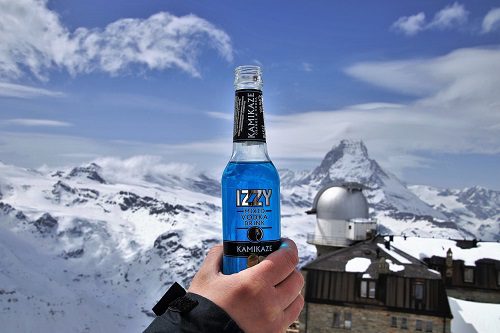When it comes to cooling a drink quickly, using a freezer is a common and convenient method. However, have you ever wondered how long it actually takes for a drink to get cold in the freezer? In this article, we will delve into the factors that influence the cooling time and explore practical solutions to speed up the process. By understanding the science behind cooling and employing effective techniques, you can enjoy a refreshingly cold beverage in no time.
The Science of Cooling in Freezers
Understanding the science behind cooling in freezers helps us grasp the concept of how long it takes for a drink to get cold. When a beverage is placed in a freezer, heat transfer occurs primarily through conduction and convection. The freezer extracts heat from the drink, causing the liquid molecules to lose energy and eventually reach a lower temperature.

Factors Affecting Cooling Time
Below are the key factors that affect how fast a drink gets cold in a freezer:
a. Initial Temperature of the Drink:
The starting temperature of the beverage plays a significant role in determining the cooling time. A drink that is already chilled or at a lower temperature will require less time to reach the desired level of coldness compared to a room temperature or warm drink.
b. Freezer Temperature:
The temperature of the freezer itself is crucial in determining the cooling time. Typically, home freezers are set to temperatures between -15°C to -20°C (5°F to -4°F). The lower the freezer temperature, the faster the cooling process will be.
c. Container Material and Size:
The material and size of the container housing the beverage can affect the cooling time. Containers made of materials with high thermal conductivity, such as metal or glass, facilitate faster heat transfer compared to plastic. Additionally, smaller containers cool more quickly than larger ones due to their reduced volume.
d. Air Circulation:
Proper air circulation within the freezer is vital for efficient cooling. A well-organized freezer with sufficient space between items allows cold air to circulate freely around the beverage container, accelerating the cooling process.
e. Freezer Load and Placement:
The amount of items already present in the freezer and their placement can affect the cooling time of a drink. A crowded freezer with limited space impedes airflow, slowing down the cooling process. Placing the beverage container in a location where it receives maximum exposure to cold air, such as the back or sides of the freezer, can help expedite cooling.

Practical Solutions for Faster Cooling
To ensure faster cooling, consider the following tips:
a. Pre-Cooling Techniques:
To reduce cooling time, consider pre-cooling the drink before placing it in the freezer. This can be achieved by storing the beverage in a refrigerator or placing it in an ice bath for a few minutes prior to freezing. Starting with a lower initial temperature helps the drink reach the desired coldness more rapidly.
b. Optimal Container Selection:
Choose containers made of materials with high thermal conductivity, such as stainless steel or glass, as they transfer heat more efficiently. Additionally, opt for smaller-sized containers to decrease the volume of the drink, facilitating faster cooling. Avoid using tightly sealed containers to prevent potential expansion and breakage due to freezing.
c. Freezer Setup and Organization:
Maintain proper airflow within the freezer by organizing it effectively. Leave sufficient space between items to allow cold air to circulate freely. Avoid overcrowding the freezer, as it hampers airflow and prolongs the cooling time. Consider removing unnecessary items or reorganizing the freezer to create space specifically for cooling beverages.
d. Rapid Cooling Methods:
Employ rapid cooling techniques to expedite the process. Placing the beverage container near the freezer’s vents or fan (if present) ensures maximum exposure to cold air. Additionally, gently stirring or shaking the drink at regular intervals helps distribute the coldness evenly, reducing the overall cooling time.
e. Utilizing Cold Water Baths:
For a faster cooling alternative, consider utilizing cold water baths. Fill a basin or sink with cold water and ice, then submerge the beverage container in the bath. The cold water absorbs heat from the drink, accelerating the cooling process. Remember to keep the container tightly sealed to prevent water from entering.

Recommended Freezing Times for Common Beverages
While cooling times may vary based on the aforementioned factors, here are approximate freezing times for common beverages in a standard home freezer:
- Carbonated beverages: 1 to 1.5 hours
- Juice or sports drinks: 2 to 3 hours
- Wine or beer: 3 to 4 hours
- Water: 2 to 4 hours
- Liquor or spirits: 4 to 6 hours
Note: These times are estimations and can vary depending on several factors, including initial temperature and container size.
Wrapping Up
The cooling time of a drink in the freezer is influenced by various factors such as initial temperature, freezer temperature, container material, air circulation, and freezer organization. However, you can employ various solutions like pre-cooling, optimal container selection, freezer setup, rapid cooling methods, and cold water baths to significantly reduce the time it takes for a drink to get cold. Remember to experiment and adapt these techniques based on your specific circumstances, ensuring you can enjoy a refreshingly chilled beverage whenever you desire.

